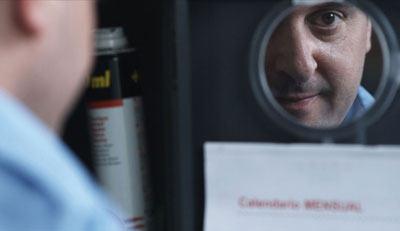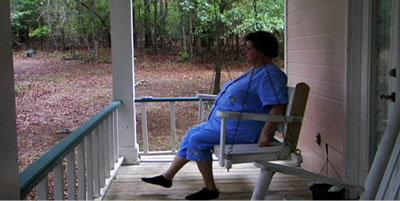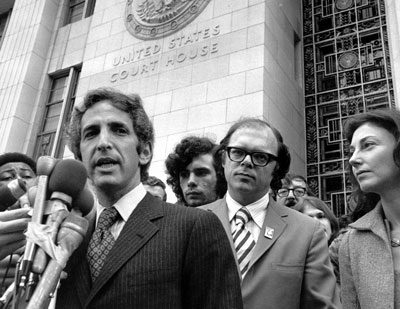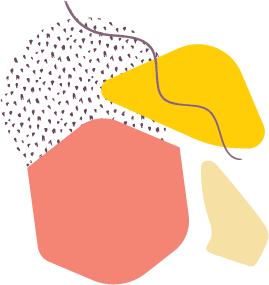Filmed over nearly three years, WASTE LAND follows renowned artist Vik Muniz as he journeys from his home base in Brooklyn to his native Brazil and the world’s largest garbage dump, Jardim Gramacho, located on the outskirts of Rio de Janeiro. There he photographs an eclectic band of “catadores” — self-designated pickers of recyclable materials. Muniz’s initial objective was to “paint” the catadores with garbage. However, his collaboration with these inspiring characters as they recreate photographic images of themselves out of garbage reveals both the dignity and despair of the catadores as they begin to re-imagine their lives. Director Lucy Walker (DEVIL’S PLAYGROUND, BLINDSIGHT, COUNTDOWN TO ZERO) has great access to the entire process and, in the end, offers stirring evidence of the transformative power of art and the alchemy of the human spirit.
Summary info for schedule – will be hidden on film page
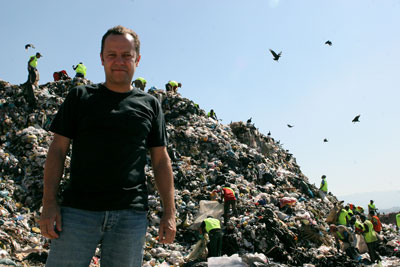
Waste Land
98-minutes
Screening day / time
Waste Land
Waste Land
Filmmaker Notes:
I have always been interested in garbage: What it says about us. What in there embarrasses us, and what we can’t bear to part with. Where it goes and how much of it there is. How it endures. What it might be like to work with it every day. I read about one woman’s crusade to show her appreciation for all the sanitation workers in New York by hugging each of them, and I applauded the sentiment … and yet … there had to be some other way for me to show my appreciation.Then when I was a graduate film student at NYU, I started training with the NYU Triathlon Club. As we endured the most grueling 6:00 a.m. workouts imaginable, I bonded with fellow triathlete Robin Nagle, a brilliant professor who was teaching about garbage. Listening to Robin talk about her work was so fascinating that I began sitting in on her PhD seminar, and loved deepening my thinking about the sociology and implications and revelations and actuality of garbage. So when Robin took her grad students to visit Fresh Kills, the landfill on Staten Island, I was curious and gatecrashed. These days it is best known as the resting place of the debris from the World Trade Center, but this was back in March 2000. It was a shocking place, with chainlink fences clad with teeming nightmare quantities of plastic bags making the nastiest noise imaginable, and pipes outgassing methane poking up at regular intervals through the exaggerated contours of the grassed- over giant mounds of garbage. It’s a parody of an idyllic hyper-landscaped city park, with garbage hills 225’ high – taller than the Statue of Liberty. We looked at the rats and seagulls and dogs, and at the palimpsests of layer upon layer of discarded possessions. And we tried to ignore the putrid smell. I love great locations in movies, and I couldn’t believe I’d never seen a landfill on-screen before. It was the most haunting place. And all of the garbage I’d ever generated living in New York City was in there somewhere. This was the graveyard of all my stuff. Along with everyone else’s. I immediately knew that I wanted to make a movie in a garbage dump. Cut to 2006, and I met producer Angus Aynsley and co-producer Peter Martin at BritDoc and again at the London Film Festival, and instantly liked them enormously and wanted to work with them. Talking about possible projects, Angus mentioned that he had met Vik Muniz and been impressed by his highly entertaining slideshow about art history. I had seen and loved Vik’s work, and I was hugely excited about the possibility of working with him. So I read some of Vik’s writing and set off with Angus and Peter to meet Vik in Newcastle, England when he had an opening at the Baltic in January 2007. When we met up again in Vik’s studio in New York two months later the conversation turned to garbage, and I suddenly thought about my trip to Fresh Kills seven years previously. That was the lightbulb moment. Vik had previously done a beautiful series using junk, and he had also done projects with street sweepings and dust. His creative use of materials is his signature — whether chocolate sauce, sugar, or condensation trails from planes — so this project would very much be an extension of his earlier work. After we’d started talking about it, no other ideas were interesting anymore. I knew that a collaboration between Vik and the catadores would be potentially very dramatic. Vik had previously done some brilliant social projects with street kids in Sao Paolo and had a wonderful ongoing project in Rio which employed kids from the favelas, and I was totally inspired by him. A month later, Angus and I got exciting news that Fabio had found one landfill where the drug traffic was under control, and the catadores were being organized into a co-operative by a charismatic young leader who might be open to collaborating with Vik. We were all very nervous — there were so many things to be afraid of, from dengue fever to kidnapping — but we all wanted to go. We arrived in Rio de Janeiro in August 2007 — Vik, Angus, Peter and me. Seeing the extremes of poverty and wealth so ostentatiously displayed through the car window … the contrasts of mountains and oceans, black and white, garbage and art, art stars and catadores … the contrasts couldn’t be more starkly drawn than in Rio de Janeiro, and I realized that it wasn’t a coincidence that we were tackling this particular topic in Rio. It was perfect. For me this film, as with all of my work, is about getting to know people who you do not normally meet in your life. And, if I’m doing my job, I aim to create an opportunity for the audience to feel they are getting under the skin, to emotionally connect with the people on the screen. But you need people you can care about. And so when Valter first cycled into my line of sight, I knew for sure that we had a movie. That day I had gone on my first recce to the landfill and was dressed head-to-toe in protective layers fit for a moon landing. His bike was decorated so creatively with odd trinkets from the trash and he honked his eagle horn with such sweet wit that I was totally smitten. I am Vik’s biggest fan. And this idea of “the human factor,” about scales in portraiture, and distances in getting to know people, is what the movie is about for me. I’m not sure anyone will notice this unless I tell them, but there are three references to ants in the movie: Vik says that when he is flying over Gramacho, the people look like “just little ants, doing what they do every day”; then Isis talks about the ant that she saw crawling over her dead son’s face; finally we see Vik playing with an ant with his paintbrush in the studio. That play of being so far away that people are just ants, with no “human factor” is the opposite experience of being so deeply connected to your son that you will never forget “not the tiniest detail, not a single single detail,” not even an ant on his face in a single moment. And Vik, as an artist, plays between these levels of proximity and distance, between showing the viewer the material and showing them the idea, revealing the relationship between the paintstrokes and the scene depicted by the paint. The portrait is Isis, it is a Picasso, it is a bunch of garbage, and it is a work by Vik Muniz – all at once. You can view things close in or further away. Likewise you can fear people from afar or you can go interact with them. I love the Eames’s POWERS OF TEN and I wanted to create a social analog. To start with we see the place from GoogleEarth, then from a helicopter, then from a car, then from a safe distance, then from a first meeting, then from a growing friendship, then from it having changed you fundamentally and permanently. Just as Vik wants the portraits to serve as a mirror in which the catadores may see themselves, so I hope the movie serves as a means for us to see our journey to becoming involved with people so far from ourselves. To zoom all the way in to caring about someone who was previously as far away as it’s possible to be. Questions poke through the fabric of the movie as things get messy. In WASTE LAND Vik and his wife start to argue on-camera about whether the project is hurting the catadores by taking them out of their environment and then, when it’s over, expecting them to return. Likewise, should documentary filmmakers interfere with their subjects’ lives? But how could they not? I don’t believe in objectivity. I observe the observer’s paradox every moment I’m filming. Your presence is changing everything; there’s no mistaking it. And you have a responsibility. My heartfelt thanks to the catadores. I can’t help seeing WASTE LAND as the third in a triptych with my earlier films DEVIL’S PLAYGROUND and BLINDSIGHT, and not least in the awe and gratitude I feel for the group of people who were courageous enough to share their stories with us — and to live lives so rich in inspiration for us all. We dedicate the movie to Valter, and remember him saying that 99 is not 100. A single can, or a single catador, can make the difference.Lucy Walker, January 2010
